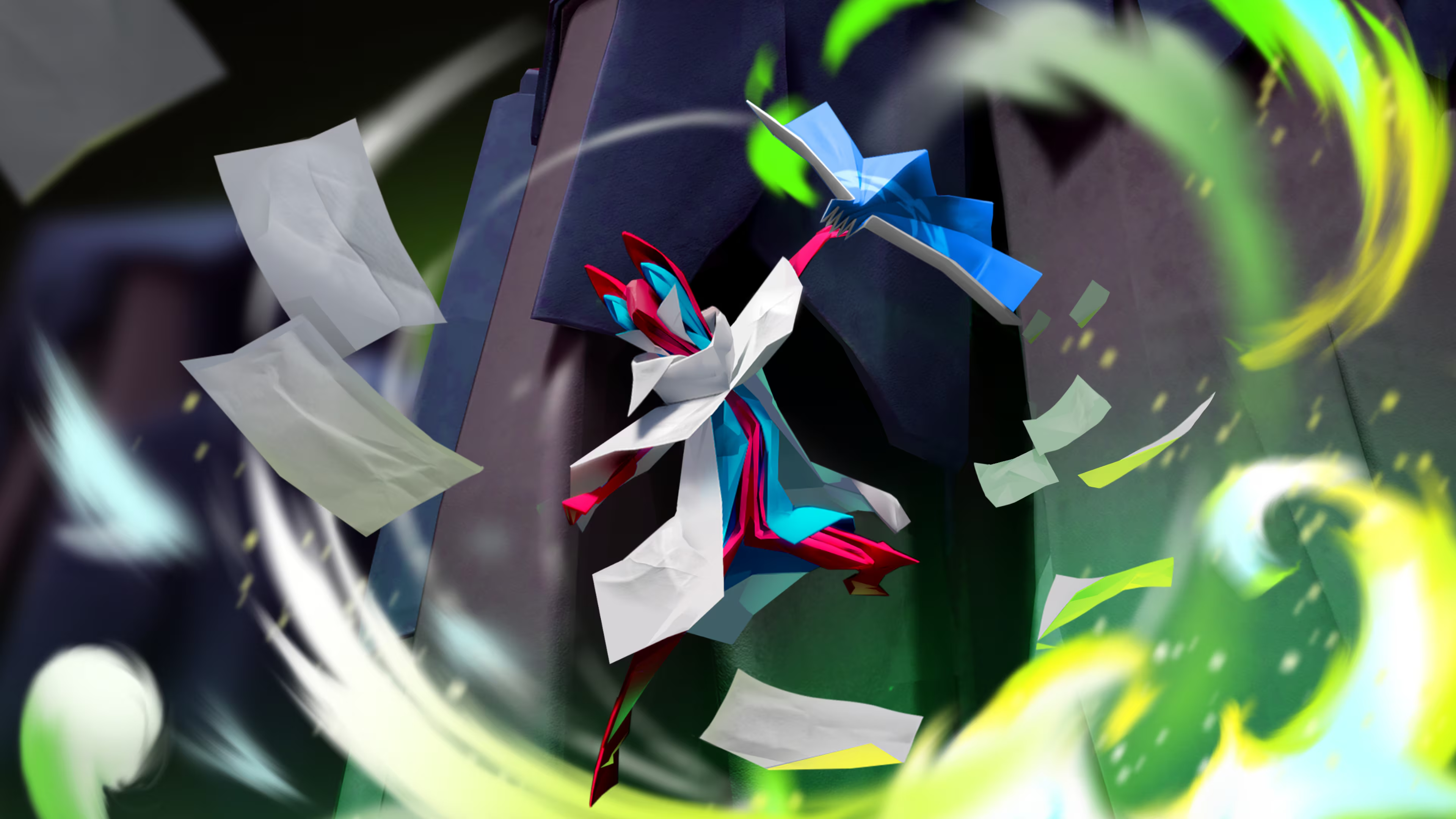I’m loath to admit it, but I’m at the perfect median age for PS2-era nostalgic revival. Games like Okami, Shadow of the Colossus, and the breadth of mascot platformers from that time are relics of a bygone era these days. Sure, Nintendo have comfortably filled that void whilst moving the genre forward, fitting nicely into the modern landscape; but there are very few new games that hit that nostalgia without some modern spin. Refusing to turn the page to 2025, then, is Hirogami.
Hirogami is a 3D action platformer inspired by the Japanese art form of Origami. The playable protagonist, Hiro, the world and all the enemies and NPCs all look convincingly like they’re a form of folded paper. It’s developed by Bandai Namco Singapore and Malaysia, a couple of support studios within the noughties juggernaut under the same moniker, making this their first full studio title. Which makes sense given that Hirogimi is whimsical, colourful and undeniably nostalgic – for better and for worse.
Seeing this for the first time at a PlayStation State of Play, I was initially enamoured by the art style and intrigued by who we now know as Hiro, transforming into a bunch of different animals, making their way through the texturally rich world. But like the real art of Origami, it’s easier to watch someone else do it than to do it yourself, and the nostalgia becomes a very mild nightmare. I’m just grateful I came away without any papercuts.
The Story Unfolds
We meet our Hiro resting at a shrine. They’re a ritualistic dancer for the Gods – a sacred and pacifistic role to embody. That is, until a purple haze, known as the Blight, starts spreading across the once spritely world. This blight becomes so pervasive that the world’s natural beauty and power become lost. Animals are corrupted by it, protectors of the world become powerless against it, and Hiro loses their ability to transform into other creatures as a result.
Despite only being a dancer, Hiro is tasked with restoring the shrine across the land to restore the natural order, as well as collecting their powers back along the way. As you can probably tell, this is very by-the-numbers as far as adventures go; an unlikely hero with a monumental task to save the world. That said, the story is more of an opportunity to facilitate your gameplay journey, rather than to deliver something that’ll resonate.
Which is fine, because Hirogami does that fairly decently. The pacing of retrieving your powers and the brevity of the levels are two examples where the game understands its limitations of being a short, sweet and gameplay-focused title. My one nitpick is that the worldbuilding, origami-inspired landscape and music all give off this ancient mystical vibe, but the characters talk to each other in such modern colloquial terms that it dampens the notion of playing Hirogami as if you’ve stumbled upon a tome telling an old tale.
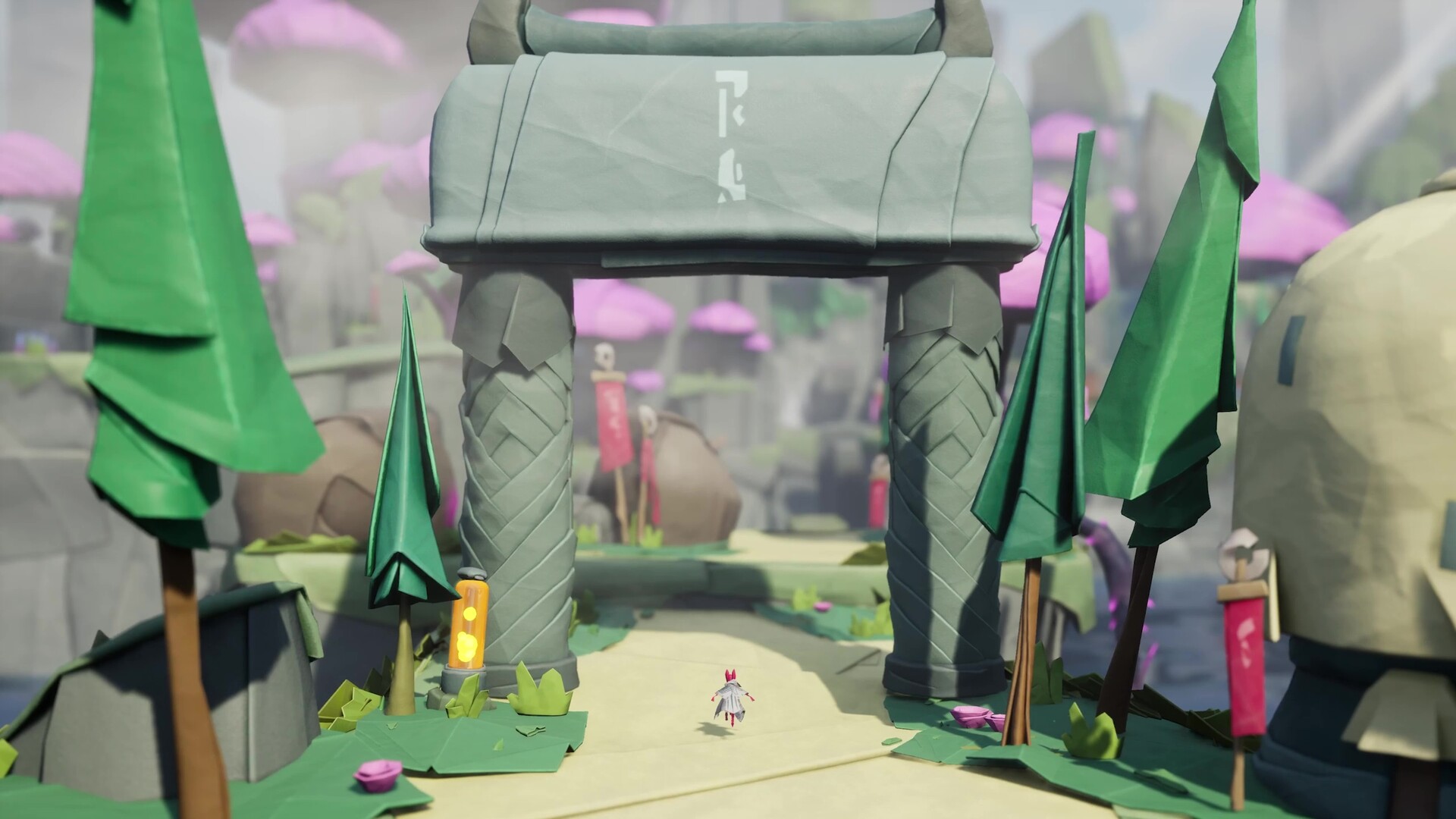
Reduce, Reuse, Recycle
Whilst we’re on the topic of tomes, Hirogami’s gameplay is no stranger to the quirk and charm of yesteryear. A cinematic camera that the player can’t move, forcing perspectives to elevate the visuals. Controls that don’t feel quite 1:1 to your inputs, with Hiro’s almost drift-like movements feeling a little frustrating to get a grasp of. On top of that, there’s also a very simplistic sense of progression to keep players on their toes, in terms of its difficulty. All of which come together to play like a PS2-era game.
If you’re yearning for something like that: simple, nostalgic and to the point, this game may just be one of your favourites of the year. For me, however, I already had my fill after the first couple of hours, before getting frustrated by the antiquated parameters the game operates in. The game is broken down into levels that take around 5-15 minutes to beat; your task across all those levels is to restore the power to the shrines. These are conveniently placed at the end of the levels, and before that, you’re taking on waves of enemies and overcoming platforming challenges.
What Hirogami does that’s interesting is that there are three different animal forms (as well as your human form) you’ll learn to embody as you progress. Each animal has their own place in either some kind of platforming puzzle solving or in combat. The armadillo can roll up into a ball, allowing you to cannonball across the levels and do damage to enemies. The frog can leap higher than others and has a spittle ability that can break down enemies’ shields, opening them up for an attack.
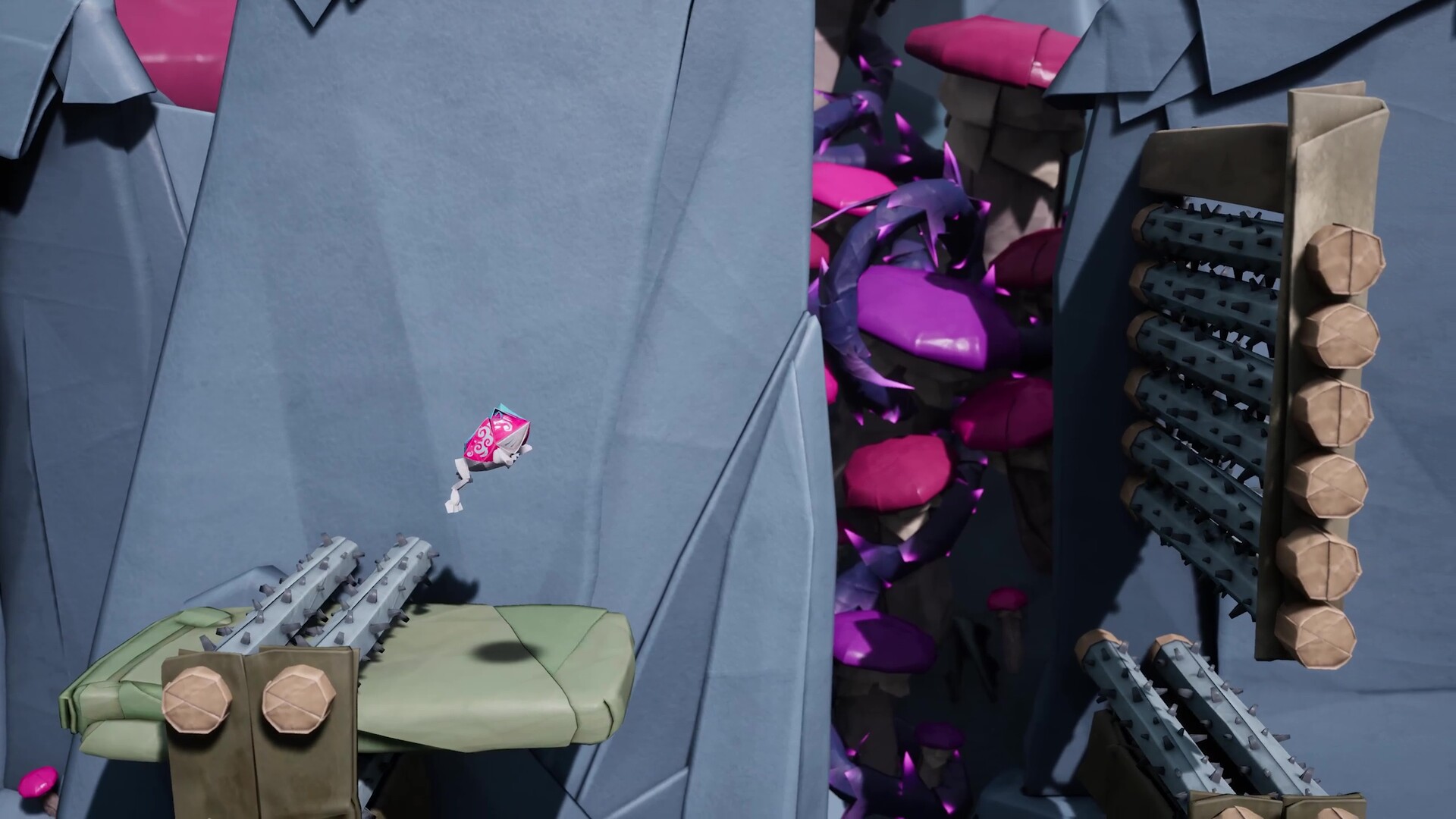
Paper Planes
This can then be your moment to fold into the gorilla, the strongest and combat-focused animal that does the highest amount of damage, but also has their own unique climbing ability. Hirogami sings when it has you switching between the four in a succinct blend of action and platforming, but those moments are few and far between. Changing into each form isn’t quite as snappy as it could be, given that you also have your unfolded form by holding ‘R2’.
As well as that, there’s no real visualisation of your aim at all, and some abilities require you to be needlessly specific about where you aim and fire. Whether that’s holding down the attack action as Hiro to send a gust of wind, activating a mechanism, or using the frog’s spittle to encase the environment in flames to use in a platforming puzzle, you kind of just have to glean the position of the character and hope that it goes where you want it to.
The further I got into the game, the more the difficulty ramped up and the more frequent these moments occurred, and it just grew tiresome instead of invigorating. Which is a shame because what the developers have here is an incomparable nostalgic platformer that would fit neatly in the aforementioned line-up at the top of this review. However, we’ve all moved on in our gaming sensibilities, and games are more accessible now than ever. It’s not about getting good either, it’s just about the one run that you got lucky with because the controls were playing nice, and there’s nothing fun about leaving it up to chance and not player ability.
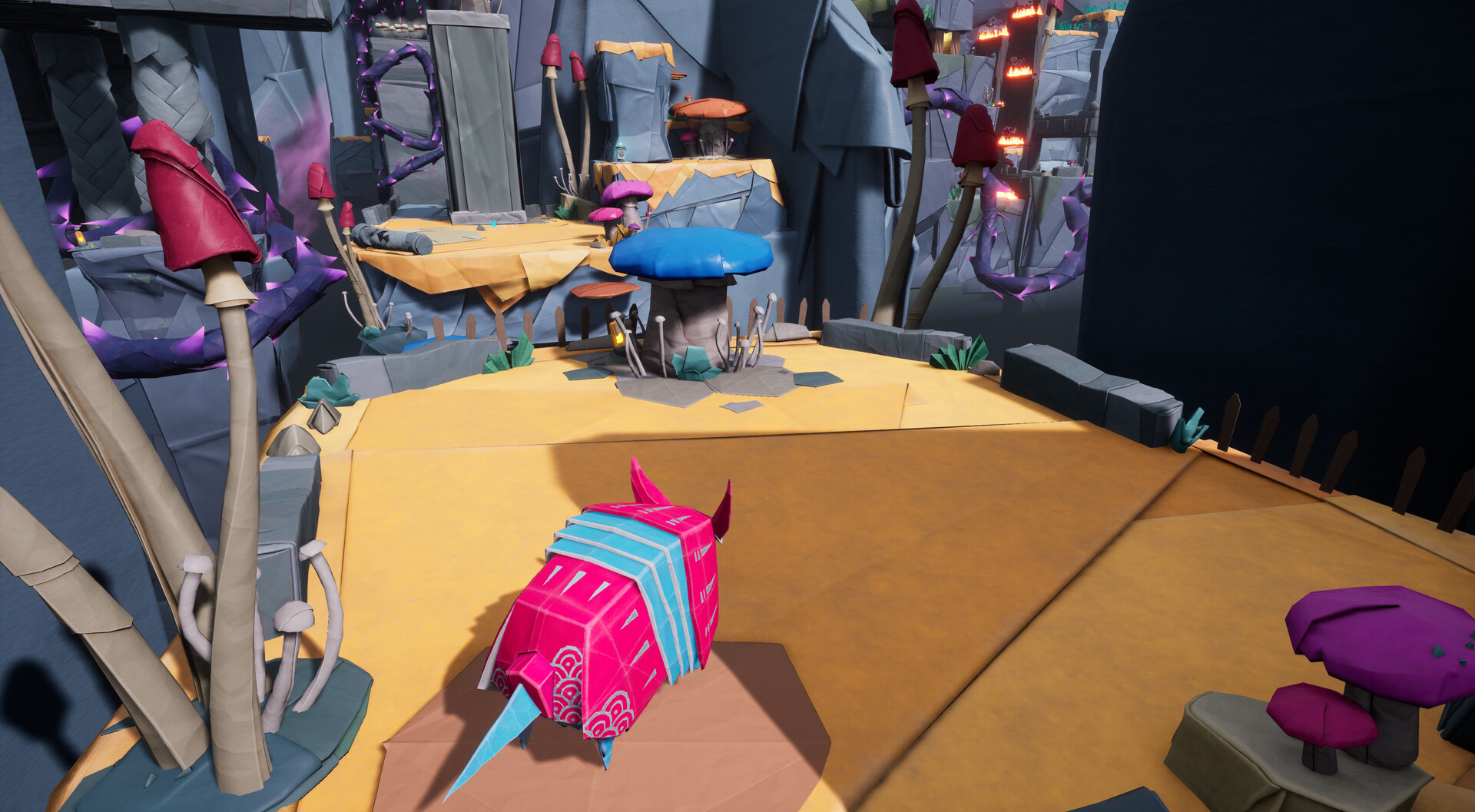
Paper Beats Rock
If Hirogami had a casual framework, where there are no stakes to how well you play, a lot of this trial and error (mainly error) wouldn’t be so scrutinised by me. However, the game commits the retro cardinal sin of side objectives that halt your progress in the main game. This could be beating the level below a certain time, maintaining a good amount of health throughout the level, finding all of the level’s secret chests, and even taking no damage at all.
So couple those side objectives that have you striving for perfection with some gameplay that doesn’t quite feel as pinpoint specific as you’d like, and you’ve got a pretty frustrating experience. Getting through the levels themselves isn’t inherently hard, but some of the final ones had me dying over again because of its clunky transforming and platforming, so I haven’t beaten what I think is the final boss because of that.
The bosses throughout the game are the key to learning new abilities. Normally, you’ll get a sense of what the ability is because the boss is using it on you in combat, creating a nice call and response to the flow of battle. They’re the easiest part of the game, though, as platforming becomes secondary, but it makes way for the fun aspect of Hirogami – switching forms and fighting.
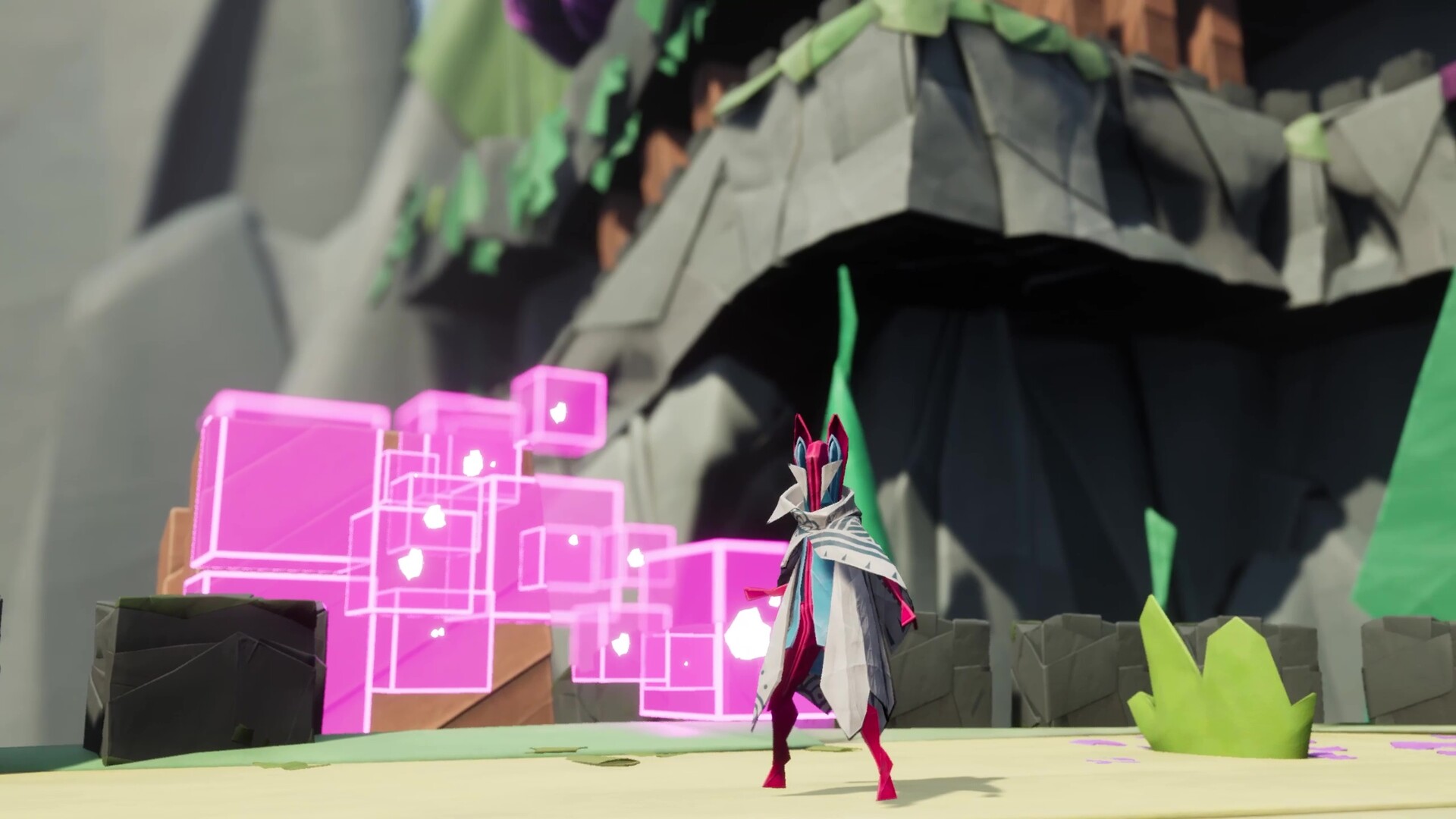
Folding Into Place
I fear this review has veered too much into the negatives, but I can assure you there is some delight to be had here. There’s an impressive level of detail that makes up a lot of its charm. Things like Hiro moving at a separate frame rate from the world, making it feel like a Laika production, the tangible forms all the animals and characters take, and the world itself is colourful and inviting. I’ve continuously been whisked away by its charm, it’s just hampered by the gameplay when it’s not working how it feels it should.
Overall, Hirogami has some decent gameplay in theory, but is ultimately executed with not enough tact. During my seven or so hours with it, I can see that the two studios were exploding with ideas to incorporate and maybe bit off more than they could chew, but I commend them for going as bold with it as possible. It doesn’t entirely work as a platformer, nor an action game and that reluctance to commit to one or another leaves Hirogami feeling like just a good game on paper.
Hirogami will release 3rd September 2025 for PlayStation 5 (review platform) and PC via Steam.
Developers: Bandai Namco Singapore, Bandai Namco Malaysia
Publisher: Kakehashi Games
Disclaimer: In order to complete this review, we were provided with a promotional copy of the game. For our full review policy, please go here.
If you enjoyed this article or any more of our content, please consider our Patreon.
Make sure to follow Finger Guns on our social channels. Twitter, Facebook, Twitch, Spotify or Apple Podcasts – to keep up to date on our news, reviews and features.
